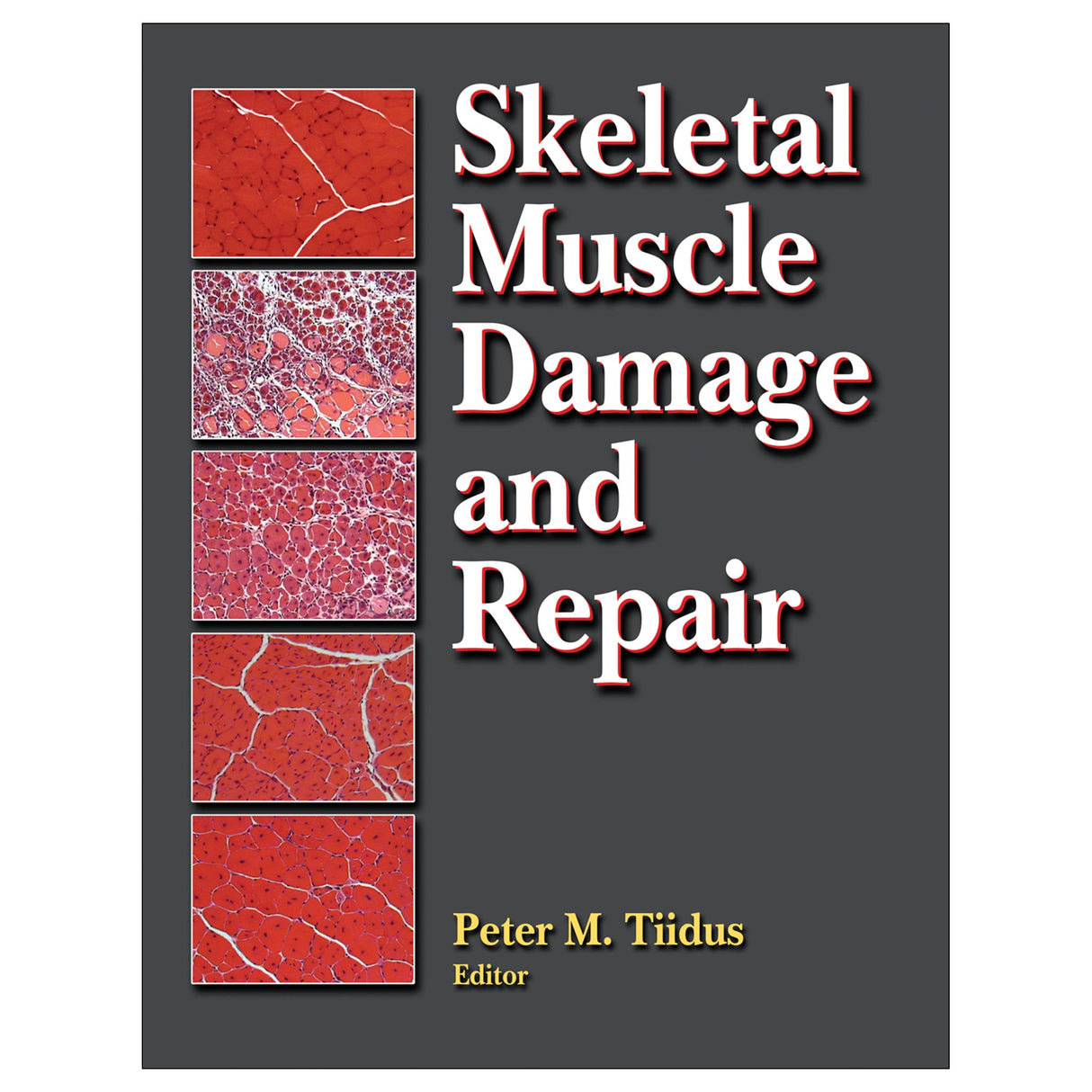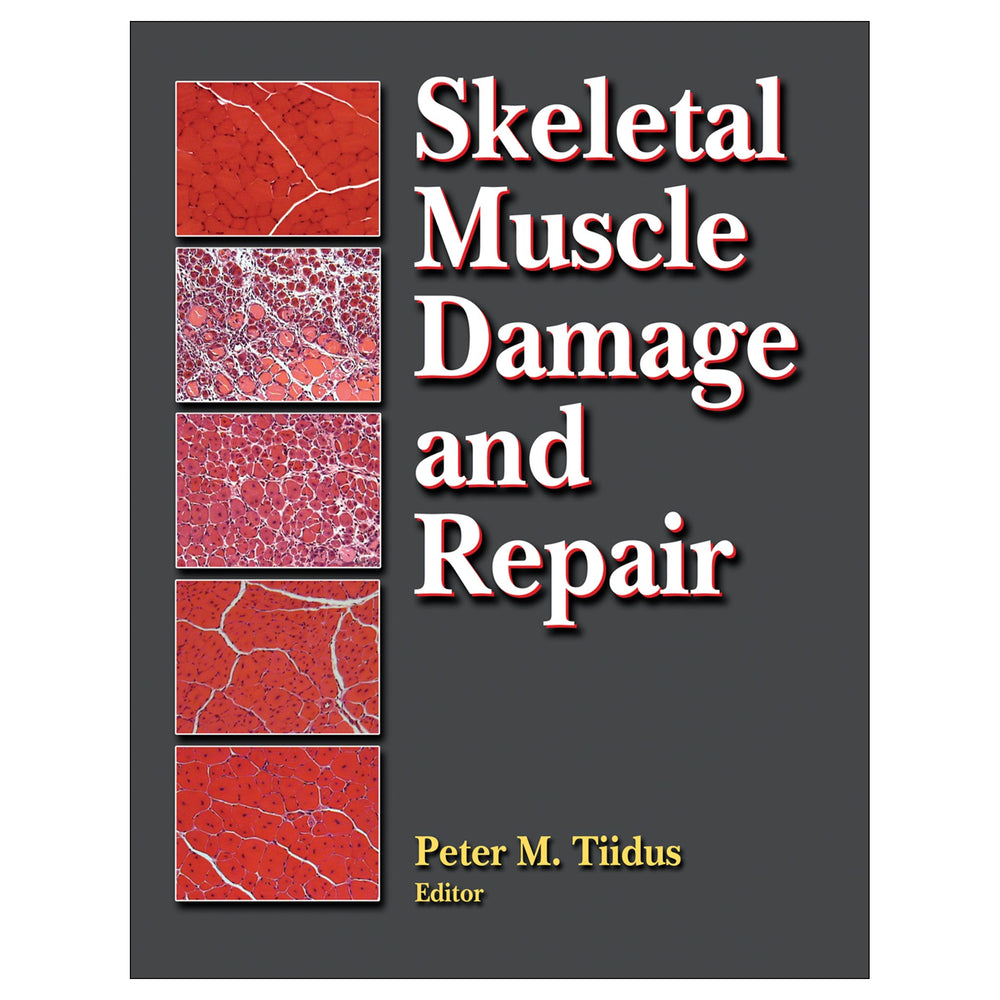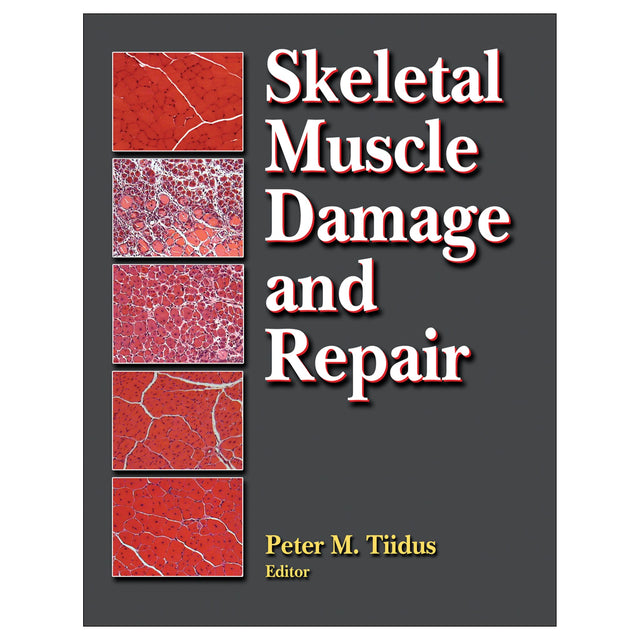Skeletal Muscle Damage and Repair PDF
Author: Peter M. Tiidus
$72.00 USD
Access Duration: 10 Years
Professionals and students interested in understanding the physiological mechanisms of skeletal muscle damage and repair will welcome this uniquely comprehensive text. Presenting both research-based information and applied clinical topics, Skeletal Muscle Damage and Repair assists readers in understanding the interrelationships of basic physiology, specific populations, and practical treatments for muscle injury and damage. The text covers a broad spectrum of topics:
• The basic science and scientific methods used to investigate exercise-related muscle damage and repair
• A review of current research related to the mechanisms of muscle damage, physiological responses to damage, and subsequent methods of muscle repair
• An examination of issues specific to various populations, including the elderly, diabetics, people with muscular dystrophies, and elite athletes
• An evaluation of other practical topics as they apply to muscle damage and repair, such as gender and hormonal influences, effects on gait mechanics, the impact in workplace settings, and the issue of “high-responder” individuals who seem extraordinarily susceptible to muscle damage
• A critical analysis of the efficacy of various popular treatment modalities, including massage, ultrasound, trigger-point therapy, physical therapy, nutraceutical interventions, and hyperbaric oxygen treatment
The text is organized into 21 chapters, each written by an internationally acclaimed researcher or research group who are experts in their field. Chapters are grouped into three parts covering a wide range of both current research and clinical topics related to skeletal muscle damage and repair mechanisms and their applications. Part I presents the physical mechanisms of muscle damage, inflammation, and repair. Part II addresses muscle damage and repair mechanisms and issues in specific populations, including older adults, diabetics, and athletes. Part III considers the influences of treatment interventions on muscle repair and healing. The combination of the three parts culminates in a thorough understanding of muscle damage and repair.
Skeletal Muscle Damage and Repair promotes an understanding of the physiological mechanisms of skeletal muscle damage and repair vital for many health professionals, therapists, kinesiologists, and physical educators. This comprehensive text exposes professionals, clinicians, and researchers to a range of issues related to muscle damage and repair. It also encourages communication between researchers interested in the mechanisms of muscle damage and repair and practitioners who treat muscle injury in various populations.
Part I. Physiology of Muscle Damage and Repair
Chapter 1. Physiology and Mechanisms of Skeletal Muscle Damage
Timothy J. Koh, PhD
Foundations
Fiber Type and Injury
Mechanisms of Muscle Injury
Nature of Exercise-Induced Muscle Injury
Summary
Chapter 2. Human and Animal Experimental Muscle Injury Models
Gordon L. Warren, PhD, and Leigh E. Palubinskas, MS
Human Muscle Injury Models
Animal Muscle Injury Models
Summary
Chapter 3. Histological, Chemical, and Functional Manifestations of Muscle Damage
Stephen P. Sayers, PhD, and Monica J. Hubal, PhD
Histological Evidence of Muscle Damage
Biochemical and Histochemical Evidence of Muscle Damage
Functional Evidence of Muscle Damage
Summary
Chapter 4. Neutrophils and Macrophages in Muscle Damage and Repair
Francis X. Pizza, PhD
The Timing and Mechanism of Neutrophil and Macrophage Accumulation
The Causative Factors in Neutrophil and Macrophage Accumulation
Neutrophil- and Macrophage-Induced Injury
Neutrophil- and Macrophage-Assisted Muscle Repair
Summary
Chapter 5. Muscle Soreness and Damage and the Repeated-Bout Effect
Ken Nosaka, PhD
Muscle Soreness
DOMS and Muscle Damage
Repeated-Bout Effect
Summary
Chapter 6. Satellite Cells and Muscle Repair
Karin Shortreed, BS; Adam Johnston, BS; and Thomas Hawke, PhD
Skeletal Muscle Stem Cell Populations
Muscle Repair and the Myogenic Satellite Cell
Extrinsic Regulation of Myogenic Satellite Cells
Special Populations, Therapies, and Myogenic Satellite Cells
Summary
Chapter 7. Emerging Molecular Trends in Muscle Damage Research
Douglas J. Mahoney, PhD, and Mark A. Tarnopolsky, MD, PhD
The “Omic” Revolution
Gene Expression
Transcriptomic Technology
Limitations of DNA Microarray Muscle Damage Study
The Future of Omics in Muscle Damage Research
Summary
Part II. Muscle Damage and Repair in Applied Situations
Chapter 8. Changes With Aging
Susan V. Brooks, PhD
Physical Frailty
Contraction-Induced Injury
Increasing Resistance to Contraction-Induced Injury
Summary
Chapter 9. Duchenne Muscular Dystrophy
Tommy G. Grainer, MS; Qiong Wang, MS; Christopher W. Ward, PhD; and Robert W. Grange, PhD
Overview
Dystrophin Structure, Glycoprotein Complex, and Gene
Scientific Investigation
Issues for Investigation
Summary
Chapter 10. Estrogen and Gender Effects
Peter M. Tiidus, PhD
Estrogen Effects on Tissues
Estrogen Effects on Skeletal Muscle Damage
Reduction of Postexercise Inflammatory Response
Possible Influence of Estrogen on Skeletal Muscle Repair
Summary
Chapter 11. Diabetes
Lisa Stenho-Bittel, PhD, PT; Muhammel Al-Jarrah, PhD, PT; and S. Janette Williams
Alterations in Glucose Transport
Diabetes and Oxidative Stress
Fatty Acid Metabolism
Extracellular Matrix Changes
Vascular Complications
Exercise
Summary
Chapter 12. Workplace and Other Overuse Injuries
Mary F. Barbe, PhD, and Ann E. Barr, PT, PhD
Muscle Response to Injuries
Workplace- and Overuse-Related Muscular Disorders
Potential Interventions
Summary
Chapter 13. Muscle Function During Human Gait
Michael Pierrynowski, PhD
Characterizing Muscle Function
Measuring Muscle Function During Gait
Muscle Function During Normal Gait
Impact of Muscle Damage on Gait
Summary
Chapter 14. Overtraining Injuries in Athletic Populations
Teet Seene, PhD; Maria Umnova, PhD; Priit Kaasik, PhD; Karin Alev, PhD; and Ando Pehme, PhD
Insufficient Recovery and Overload
Overtraining Effects on Skeletal Muscle
Changes in Skeletal Muscle Biochemistry
Protein Isoforms
Summary
Chapter 15. Intersubject Variability in Developing Exertional Muscle Damage
Priscilla M. Clarkson, PhD, and Stephen P. Sayers, PhD
Factors Affecting Development of Rhabdomyolysis
Variability in Responses to Eccentric Exercise
Genetic Differences in High Responders
Summary
Part III. Treatments and Interventions in Muscle Damage and Repair
Chapter 16. Massage Therapy
Peter M. Tiidus, PhD
Massage Effects on Indirect Indices of Damage and Repair
Massage Effects on Fibrosis, Muscle Tension, and Mood
Summary
Chapter 17. Ultrasound
Dawn A. Gulick, PhD, PT
Mechanisms of Ultrasound
Effects of Ultrasound on Tissue
Phonophoresis (or Sonophoresis)
Efficacy
Summary
Chapter 18. Physical Therapy and Related Interventions
Richard M. Lovering, PhD, PT
Muscle Injury and Recovery
Types of Muscle Injury
Current Therapies
Prevention
Summary
Chapter 19. Antioxidant Supplementation
Allan H. Goldfarb, PhD
Potential Mechanisms of Exercise-Induced Muscle Damage
Vitamin Supplementation
Supplementation with Other Antioxidants
Combined Antioxidant Supplementation
Summary
Chapter 20. Therapies for Myofascial Trigger Points
Leesa K. Huguenin, MBBS, MS
Defining and Explaining Trigger Points
Investigating Trigger Points
Proposed therapies
Summary
Chapter 21. Hyperbaric Oxygen and Drug Therapies
Peter M. Tiidus, PhD
Hyperbaric Oxygen Therapy
Drug Therapies
Summary
“This book offers quality information on a very specific aspect of muscle performance. Few if any other books focus on such a defined area.”
-Doody’s Book Review





